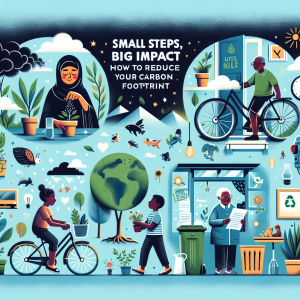Solar Energy Breakthroughs Shaping the Future
Solar energy has seen remarkable advancements in recent years, laying a foundational role in the transition to renewable energy systems. Breakthroughs in solar energy technologies are not only optimizing the efficiency and cost-effectiveness of solar panels but are also paving the way for innovative applications and integrations into daily life. High-efficiency photovoltaic (PV) technologies, innovative materials, and enhanced energy storage systems represent just a fraction of the developments shaping our future with solar energy.
One notable advancement is in perovskite solar cells. Perovskites offer a promising alternative to traditional silicon-based solar cells, primarily due to their lower production costs and flexibility in form factors. Recent research has pushed the efficiency of these cells closer to 30%, making them competitive with, and even surpassing, some traditional silicon panels. Perovskites can be manufactured using simpler, roll-to-roll printing methods, reducing overall processing costs. Researchers are also addressing stability issues, which once concerned the longevity of perovskite cells, by developing hybrid materials that resist degradation over time.
In addition to perovskites, tandem solar cells are set to revolutionize solar energy efficiencies. These cells stack multiple layers of photovoltaic materials to catch a broader spectrum of sunlight. Silicon-perovskite tandem cells have reached over 29% efficiency in laboratory settings. The combination allows for better utilization of the sun’s energy, converting more sunlight into electricity compared to single-layer cells. This rapid efficiency gain makes tandem cells an exciting contender for next-generation solar technologies.
Beyond efficiency improvements, material science innovations are central to solar breakthroughs. Transparent solar cells are a particularly exciting development, with the potential to transform windows into electricity-generating panels. This technology employs organic photovoltaic materials that selectively absorb non-visible light spectra, allowing visible light to pass through unimpeded. As research progresses, these cells could transform urban environments by integrating seamlessly into building facades without compromising aesthetics.
Moreover, organic photovoltaics (OPVs) are gaining traction due to their lightweight, flexible properties. OPVs can be integrated into diverse surfaces, expanding the applicability of solar technology beyond traditional panels. While OPVs currently lack the efficiency of silicon-based cells, advances in molecular engineering are enhancing their viability. Improvements in the charge transport pathways and the stability of organic materials are inching OPVs closer to commercial competitiveness.
Hand in hand with enhanced solar technologies are innovations in energy storage. One of the persistent challenges of solar energy is its intermittent nature; thus, efficient storage solutions are critical for maximizing its potential. Breakthroughs in battery technology, such as solid-state batteries, are pivotal. These batteries offer higher energy densities, faster charging times, and a longer lifespan compared to current lithium-ion alternatives. Advancements in flow batteries, which store energy in liquid electrolytes, also hold promise for large-scale solar energy storage, balancing grid fluctuations due to variable supply.
A noteworthy innovation for distributed solar systems is the development of solar-powered hydrogen production. Solar-to-hydrogen technology uses sunlight to split water molecules, generating hydrogen fuel that can be stored and used for electricity production, transportation, and heating. This approach not only provides a clean energy vector but enhances solar energy’s dispatchability by decoupling energy production from weather patterns and daylight availability.
Moreover, solar energy breakthroughs are being accelerated by digital and data-driven technologies. Smart grid technology, augmented by artificial intelligence (AI), enhances the ability to integrate decentralized solar power into national energy grids. AI algorithms can predict energy production and demand with precision, optimizing power distribution and storage in real-time and minimizing waste.
Agrivoltaics, the practice of integrating solar power systems with agricultural production, is also gaining momentum. Dual land use for both agriculture and solar energy maximizes land efficiency and reduces competition for space. Innovations in solar panel designs that allow more light to reach crops beneath them are being pursued. This not only optimizes solar energy capture but can also create microclimates favorable for certain crops, enhancing agricultural yields.
Finally, innovations in solar manufacturing processes are reducing the environmental footprint of solar technology. Advances in recycling methods for solar panels minimize waste and recover valuable materials, promoting a circular economy within the solar industry. Environmentally benign solvents and manufacturing techniques are being developed to ensure that the production of solar components has minimal impact, aligning the solar industry’s practices with its sustainability goals.
In essence, the confluence of material science, nanotechnology, AI, and innovations in storage and integrative strategies is setting the stage for a solar-powered future. As these technologies continue to mature, the potential to meet global energy demands with clean, sustainable solar power becomes increasingly attainable. The ongoing evolution of solar energy not only promises to reshape power generation but also heralds a new era of sustainable innovation across multiple facets of modern society.



